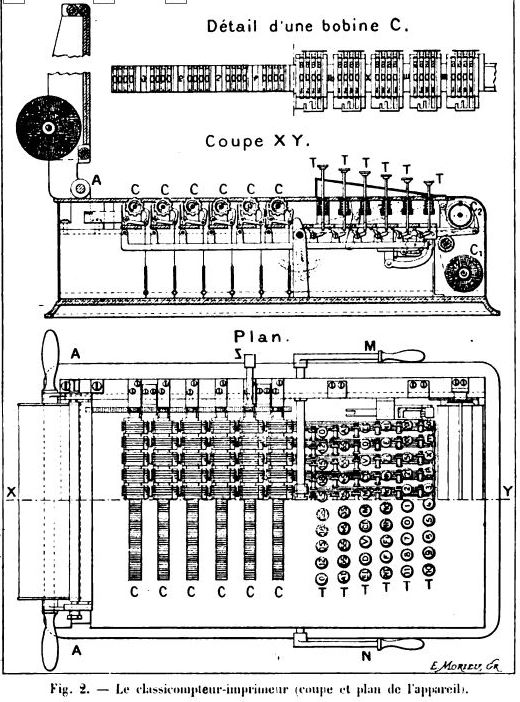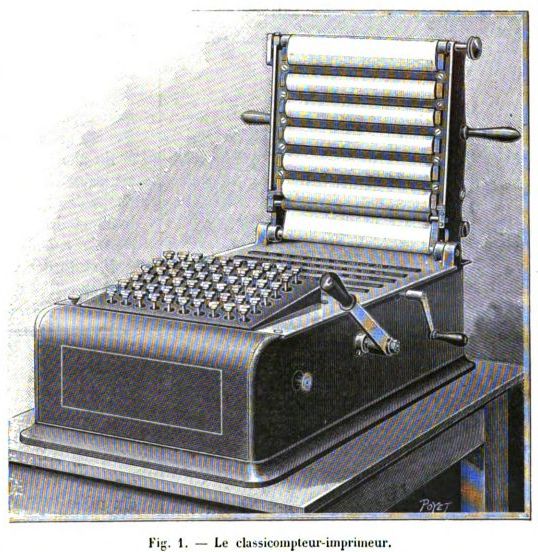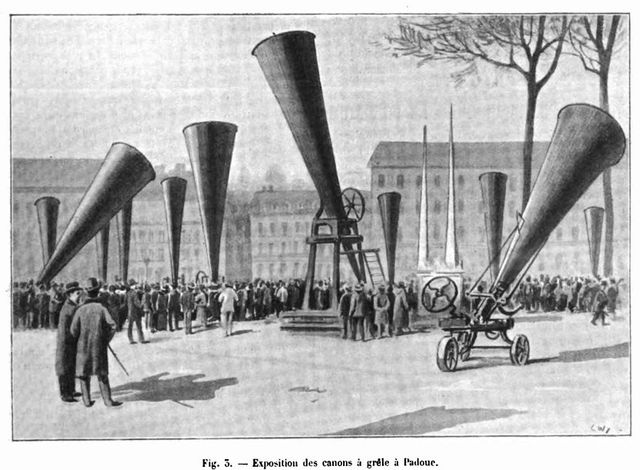Saturday, September 05, 2020
Was Hollerith famous?
An article in a 1902 SciAm basically translates an earlier article in the French La Nature.
This was the French answer to Hollerith, and the French author considered it superior to Hollerith.

 When SciAm translated the article, they didn't even bother to correct the spelling of 'Hollrith', and didn't try to defend his reputation.
When SciAm translated the article, they didn't even bother to correct the spelling of 'Hollrith', and didn't try to defend his reputation.
 The neat little shed wasn't a shelter for le tireur de grèle; it housed the acetylene generator and trigger mechanism for the cannon. Le tireur was meant to stay in his farmhouse and control the system remotely.
The neat little shed wasn't a shelter for le tireur de grèle; it housed the acetylene generator and trigger mechanism for the cannon. Le tireur was meant to stay in his farmhouse and control the system remotely.
 Reminds me of this.
Reminds me of this.

 When SciAm translated the article, they didn't even bother to correct the spelling of 'Hollrith', and didn't try to defend his reputation.
When SciAm translated the article, they didn't even bother to correct the spelling of 'Hollrith', and didn't try to defend his reputation.
M. MARCH, chief of the Bureau of Statistics, who had charge of the operations connected with the taking of the last census in France, has devised an apparatus that permits of registering in their entire extent the manifold answers figuring on the census cards to be abstracted. This machine, which is called a "classicompteur-imprimeur" (printing classification counter) comprises simple mechanical combinations only. M. March's apparatus possesses manifold advantages over all similar ones invented up to the present time, in that (1) it permits of the direct abstracting or epitomizing of the census cards without a preliminary transcription upon special cards, as is necessary with the Hollrith machine; (2) it gives definite results with the first manipulation of the cards; (3) since the control of the registering apparatus is mechanical, there is no fear of errors in reading or transcription; (4) after the abstracting of each series of cards, all the counters having been brought to zero, the operations are greatly simplified, since differences never have to be established between the consecutive numbers registered; (5) it is easily manipulated.Hollerith's machine was in rapid commercial development at that time, and had already served in two censuses. Was he obscure enough that SciAm didn't notice the misspelling? = = = = = Another item in the same 1901 La Nature was more intrinsically interesting. This hail cannon, invented in Italy, was claimed to protect 50 acres of farmland or vineyard from hail. It used electrically triggered acetylene explosions, sending shock waves up into the clouds to break the circulation. Would it also prevent tornados? (The artist suggests this with an incipient funnel cloud.)
 The neat little shed wasn't a shelter for le tireur de grèle; it housed the acetylene generator and trigger mechanism for the cannon. Le tireur was meant to stay in his farmhouse and control the system remotely.
The neat little shed wasn't a shelter for le tireur de grèle; it housed the acetylene generator and trigger mechanism for the cannon. Le tireur was meant to stay in his farmhouse and control the system remotely.
 Reminds me of this.
Reminds me of this.Labels: 1901
